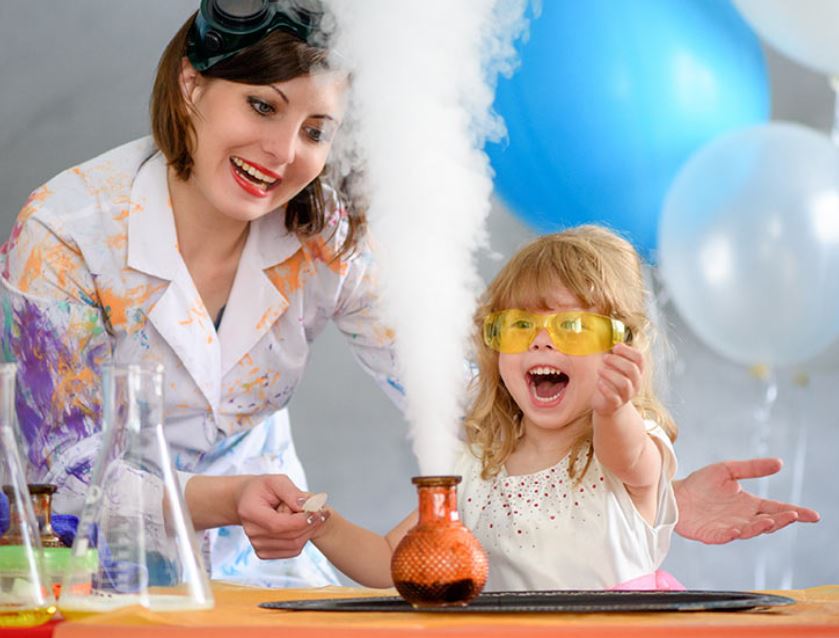Here is a list of questions and answers about chemistry that kids may ask:
- What is chemistry? Chemistry is the study of matter and its properties, how it changes, and the energy involved in those changes.
- What is an atom? An atom is the basic unit of matter. It consists of a nucleus made up of positively charged protons and neutral neutrons, surrounded by negatively charged electrons.
- What is a molecule? A molecule is a group of two or more atoms bonded together. For example, water (H2O) is a molecule made up of two hydrogen atoms and one oxygen atom.
- What is a chemical reaction? A chemical reaction is a process where one or more substances are transformed into one or more new substances with different properties.
- How do scientists study chemicals? Scientists use a variety of techniques to study chemicals, including spectroscopy, chromatography, and microscopy.
- What are the different states of matter? The three most common states of matter are solid, liquid, and gas. There are also other states of matter, such as plasma and Bose-Einstein condensate.
- What is the periodic table? The periodic table is a chart that organizes all the known chemical elements according to their properties.
- What is an element? An element is a substance that cannot be broken down into simpler substances by chemical means. Each element is made up of one type of atom.
- How do atoms combine to form molecules? Atoms can combine with other atoms through chemical bonds, such as covalent bonds, ionic bonds, and metallic bonds.
- Why do some things dissolve in water and others don’t? The ability of a substance to dissolve in water depends on the polarity of the substance and the water molecules. Substances that are polar or have a similar polarity to water tend to dissolve in water.
- What are acids and bases? Acids are substances that donate hydrogen ions (H+) in solution, while bases are substances that accept hydrogen ions.
- What is pH? pH is a measure of the acidity or basicity of a solution. It is based on the concentration of hydrogen ions in the solution.
- How does soap work? Soap molecules have two ends – one end is attracted to water (hydrophilic) and the other end is attracted to oils and dirt (hydrophobic). When soap is added to water, the hydrophobic end attaches to the dirt, and the hydrophilic end pulls it away from the surface being cleaned.
- What is the difference between a solid, a liquid, and a gas? Solids have a fixed shape and volume, liquids have a fixed volume but take the shape of the container, and gases have neither a fixed shape nor a fixed volume.
- What is combustion? Combustion is a chemical reaction between a fuel and an oxidizing agent, usually oxygen. It produces heat and light, and often also releases gases such as carbon dioxide and water vapor.
- What is photosynthesis? Photosynthesis is the process by which green plants and some other organisms use sunlight, carbon dioxide, and water to produce oxygen and sugar.
- What is respiration? Respiration is the process by which organisms convert oxygen and glucose (sugar) into energy, carbon dioxide, and water.
- What are polymers? Polymers are large molecules made up of repeating units called monomers. Examples of polymers include plastics, rubber, and DNA.
- What is the difference between an organic and inorganic compound? Organic compounds contain carbon, while inorganic compounds do not.
- What is a chemical bond? A chemical bond is a force of attraction between two or more atoms that holds them together in a molecule
Check out other cool chemistry concepts with other chemistry kits below!

